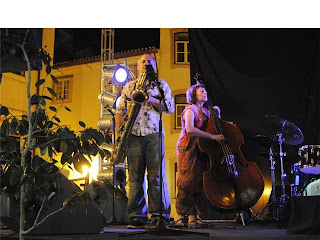
Mr. Um, your lyrics are full of sardonic melancholy. Have you been an unhappy man in your adolescence?
Yes.
Some people call you a poet, some a musician. How would you put it?
I'm not a poet, and I'm more of a non-musician than a musician. I think I work in a highly-specialized field which draws on a range of crafts.
When and how did you start making music?
I've had a very long love affair with tape-recorders, but I was too shy to tell even my girlfriend that I wanted to make music until I was 21. Then I became the terrible singer in a band. After that we split and I bought a computer in 1996 and I began in earnest then.
Why are your tracks so short?
They are not short. They are concise. Why shouldn't songs be short? I like short songs. If a song of mine seems too short, you can always listen to it twice. Or you can listen to my song "That's Too Close" which is about how a pretty girl told me my songs were too short. One day I will meet the Dalai Lama and I will wait for his words of wisdom and he will tell me my songs are too short.
Your "No Pressure" record [Gagarin Records, 2008] starts with the line "I have fear inside of me". Please elaborate.
I'm very neurotic and uptight. I'm a zulu worrier. Performance is a kind of valve mechanism for me.
To whom are your lyrics addressed to?
A lot of my music is made just for it's own sake, and I'm kind of talking to myself, but sometimes I'm bitching about a specific other person or how this world of ahistorical squares has done me wrong.
What is your connection to horses?
I have a special t-shirt with a horse on it to wear on particularly troublesome days. Also, I love the story that Nietzsche saw a man cruelly whipping a horse, and he was so overwhelmed with unSuperman-like compassion that he permanently lost his mind and threw his arms around the horse's neck.
An interview by Felix Kubin
Photo + image: R.R.

Published under the kind permission of Gagarin Records























